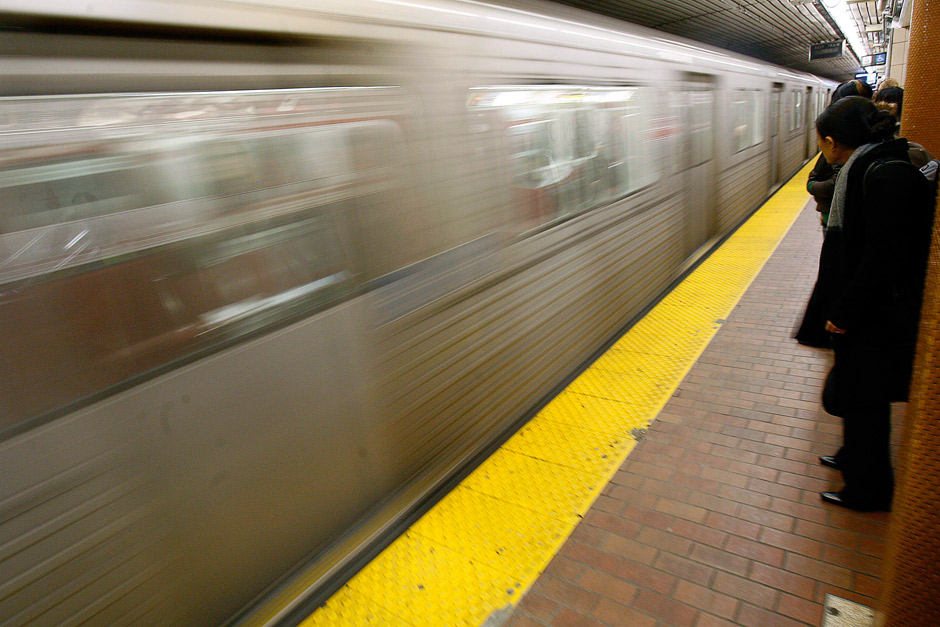TORONTO – Mayor Rob Ford has succeeded in turning Scarborough’s light rail into a subway. Sheppard Avenue may be next.

Speaking with Jerry Agar on Newstalk 1010 Monday, Ford said changing the Scarborough LRT to a subway was “just the beginning.”
“They approved the LRT on Sheppard – people don’t want the LRT on Sheppard. So I guess that will be our next subway plan is to tackle the LRTs on Sheppard and put subways along there to connect the loop between Don Mills and McCowan,” he said. “It only makes sense.”
City council approved a Sheppard LRT in 2007 as part of the Big Move – a comprehensive transit plan for the Greater Toronto Area. The LRT would go from Don Mills Station to Meadowvale Road connecting with what was supposed to be another light rail transit line in Scarborough.
But the Scarborough LRT is now slated to be a subway.
Its route remains unknown: The provincial and federal governments have each promised funding ($1.4-billion and $660-million, respectively) but for different plans.
The city signed a Master Agreement with Metrolinx, the province’s regional transit planning body, in November, 2012 to build four LRTs – one along each of Don Mills, Sheppard, Scarborough and Eglinton.
Since then, the city confirmed Scarborough’s LRT, then changed it to a subway stretching to Sheppard Avenue. Then Ontario Transportation Minister Glen Murray switched to a truncated version that would run to the Scarborough Town Centre, and Finance Minister Jim Flaherty endorsed the city’s subway plan weeks later.
Related: Expert says there is no quick fix for Toronto’s traffic problems.
During his funding announcement Monday, Flaherty said shovels could be in the ground “within a year or two.”
“That may be very difficult,” said Metrolinx spokesperson Anne Marie Aikens.
“That would predispose there was no environment assessment and things like that.”
Flaherty would not say if the money would be available if the subway plan should change again.
It still isn’t clear who will pay for either Scarborough subway plan: The province pledged $1.4 billion for its own plan; the federal government committed $660 million for the city’s version. City Council voted in July to increase development charges as well as property taxes between 1.1 and 2.4 per cent to generate part of a further $600 million needed. But Mayor Rob Ford said Tuesday at executive committee that he would try and keep the increase at 0.25 per cent a year for four years, even though that would only raise about $50-million in total.
Estimates released by the TTC on Monday suggest Murray’s plan could cost $2.9 billion, while the council approved plan would cost $2.5 billion.
Meanwhile, some are worried changes to Toronto’s master plan for transit will jeopardize other projects.
“It’s slightly ironic,” said Councillor Josh Matlow, who fought unsuccessfully to keep Scarborough’s light rail option, “that some of the very councillors that fought to get the Sheppard LRT constructed have now opened up a hornets’ nest and have delivered the mayor an opportunity to reopen the master agreement with Metrolinx and put every line that we thought was voted on and under construction in jeopardy.”
Whether or not the Scarborough subway is constructed on time, Matlow said, it doesn’t meet the needs of Toronto’s “true transit priorities.”
At the same time, he worries further changes and increased investment to fewer lines could jeopardize the so-called Downtown Relief Line.
“It would sideline it for many years to come.”
Matlow has launched a campaign on his website urging Torontonians to urge their councillors to commit transit funding to the Downtown Relief Line.
Competing, constantly changing visions for public transit in Toronto are nothing new.
“This has been something we have a rich tradition of, unfortunately,” University of Toronto civil engineering professor Eric Miller said in an interview Tuesday.
“It’s not that we don’t do good planning, it’s not that we haven’t had good plans, but politicians don’t seem to listen to them very often.”
Related: Identifying cheap and easy transit solutions for Toronto’s public transportation system.
Miller pointed to the cancellation of the Spadina Expressway by Premier Bill Davis in June, 1971. Instead, Miller said, Davis promised “magnetic levitation intermediate capacity transit” or trains that use magnetic forces to push trains along a track.
”You haven’t seen many mag-lev trains running around the city lately, have you?” Miller asked.
Miller added that “planning by press conference” has caused Toronto’s public transit system to lag behind the city’s growth.
“I actually think that’s one of the reasons we’ve been so singularly unsuccessful in building much transit over the last several decades is that we have way too much of that and we don’t put any solid comprehensive plan together … and eventually things fall apart. And it shows that these are not well thought-out ideas.”
He pointed to The Big Move as a comprehensive “strategy” for public transit and admitted that it should be open to change.
“No plan can be completely rigid. Plans have to be flexible and adapt to new information, new ideas, things you’ve learned,” he said. “But you don’t want the plan to be completely thrown out the window and replaced by something else. And you don’t want it just blowing in the wind, either.”
Transit plans are inevitably going to be political, Miller said: They require huge amounts of public investment and impact the day-to-day lives of just about all Torontonians. As a result, the decisions can’t be taken out of the hands of politicians completely.




Comments